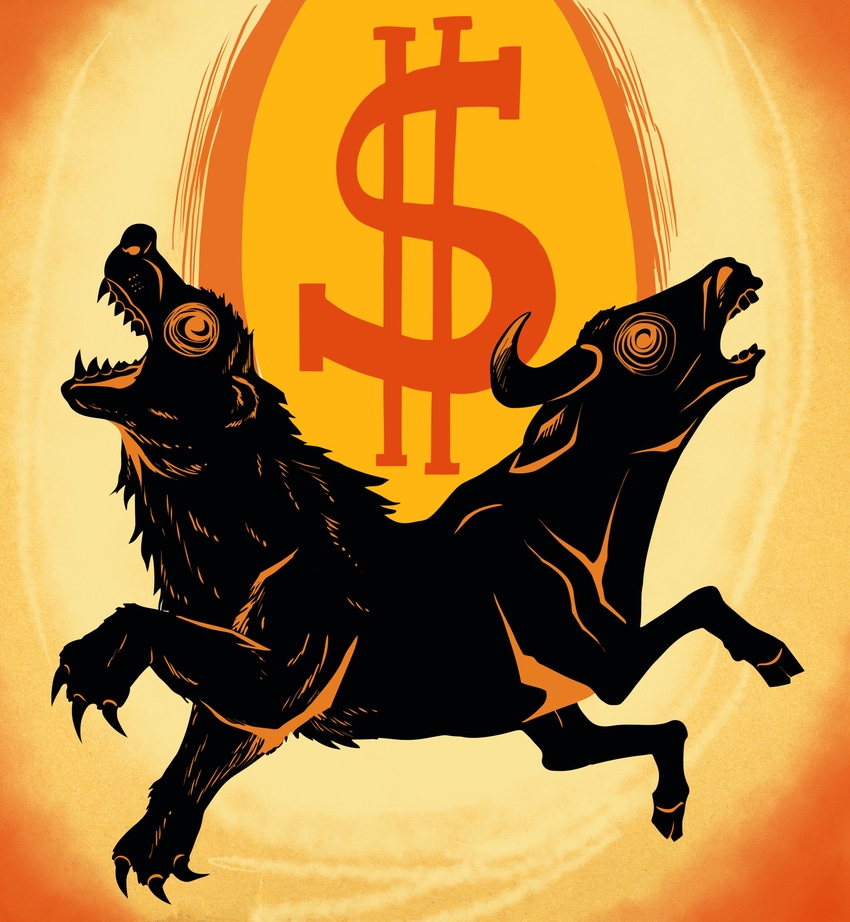
Cattle prices in 2017 are expected to average close to fourth-quarter 2016 levels, though they will be lower than 2016 for year over year averages.
Several factors may have a significant impact on cattle and beef markets in 2017 and may change current price expectations. These factors bear close watching in the coming year.
Volatility: Uncertainty and volatility from a variety of sources will continue to hover ominously over cattle and beef markets in 2017. Current US macroeconomic conditions are encouraging: The stock market finished strong and unemployment was low at the end of 2016.
However, the economy is gearing up for higher interest rates and potentially higher inflation moving into 2017. Uncertainty surrounds the changes that have been suggested by the incoming Trump administration. The economic impacts may be positive or negative or, more likely, some combination of both, but the uncertainty surrounding coming changes is without question a negative.
In addition to U.S. macroeconomic uncertainty, global market uncertainty will likely continue in the coming year. The Brexit vote of last summer has been followed by several additional populist moves in Europe that add to global economic uncertainty. Separate but related to macroeconomic uncertainty, volatility in live and feeder cattle futures has significantly reduced the effectiveness of these tools for price discovery and risk management and contributed to additional cash market volatility, which appears likely to continue in 2017.
More beef: An additional 4% of beef production is expected in 2017, in addition to the 6.1% year-over-year increase in 2016. Cattle slaughter exceeded expectations throughout 2016.
Changes in cattle slaughter and carcass weights from current expectations may cause adjustments in beef production levels and timing in 2017 and could impact current price forecasts.
Herd expansion through 2016 ensures increased beef production through 2018. Herd expansion may slow or stop completely in 2017 which will impact heifer flows in 2017 and will determine beef production expectations beyond 2018.
Export questions: International trade in beef and cattle is a critical component of price expectations for 2017. Expectations for continued growth in beef exports simultaneous with decreased beef imports will significantly offset a portion of increased beef production in 2017. One of the bigger uncertainties surrounding the Trump administration is the direct impact on current trade patterns as well as potential future beef and cattle trade policies.
The dollar is expected to continue strong and will continue to pose a headwind to faster and stronger improvement in cattle and beef trade.
More meat: Increased beef production will combine with increased pork and poultry production for another record total meat supply in 2017.
Domestic per capita meat consumption is not expected to be a record, depending critically on continued exports of all meats, but is expected to increase another 1.5% year-over-year in 2017, on top of the 1.4% year-over-year increase in 2016.
Retail beef prices will continue adjusting down in 2017, which is critical to help the market absorb additional beef in the face of large total meat supplies.
Feed and drought: Feedlots will continue to enjoy low cost of gain as record 2016 grain crops keep grain supplies plentiful through the current grain marketing year.
Dry conditions across much of the southern part of the country are consistent with La Niña conditions and could be an issue for 2017 forage and crop production if those conditions persist into spring.
Peel is Oklahoma State University Extension livestock marketing specialist.
About the Author(s)
You May Also Like




